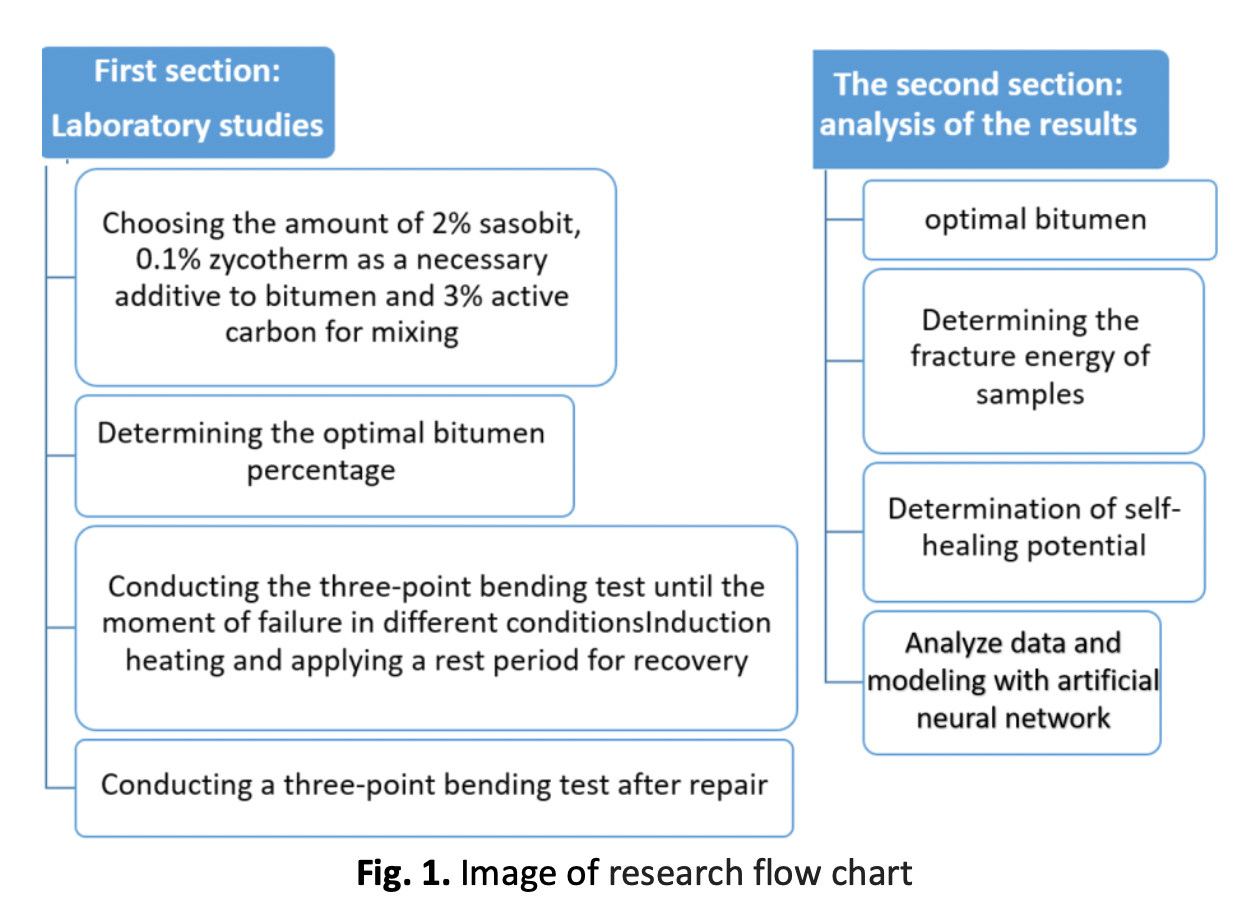Presenting the Self-Healing Potential Model by Induction Heating Method in Warm Asphalt Mixtures by Artificial Neural Network
DOI:
https://doi.org/10.37934/arfmts.105.2.120Keywords:
WMA, self- healing, activated carbon, Artificial Neural Network Modeling, ZycothermAbstract
The increasing number of vehicles in the world and the increase in the dimensions of light and heavy vehicles with different combinations, including simple and compound axles, have caused various types of damage in the asphalt, which affects the performance of the roads and requires a suitable pavement. For this reason, engineers try to improve the performance of asphalt mixture in different ways and increase their useful life. Cracking is one of the main failure modes of asphalt pavements. Fatigue cracking is the most common form of asphalt failure and is one of the important factors in reducing the life of road pavements. The purpose of this research is to investigate the index of self-healing potential (HI) of asphalt mixtures containing activated carbon and zycotherm by induction heating method and modelling by artificial neural network. First, by making warm mixture asphalt samples containing activated carbon, self-healing by induction heating method was provided in the pavement, and then the effect of traffic loading and environmental conditions simultaneously in terms of changes in loading parameters, taking into account the conditions of the service life. The results show that the use of activated carbon increases the values of shear modulus. It also improves the properties of modified bitumen at all temperatures. The resistance of the asphalt mixture against breaking and cracking, as well as the maximum force tolerance at the temperature of -16°C is higher than at the temperature of 25°C, which is one of the reasons for the reduction of flexibility of bitumen at low temperature. Also, for modelling, perceptron multi-layer neural network (MLP) with 9 input variables, three hidden layers and one output layer has been used. The results showed that the explanation coefficient of the neural network model for training, validation and evaluation data was 0.99717 for training, 0.62053 for validation and 0.9301 for testing. These values correctly show the high fitting ability of the proposed neural network model. Also, the lowest value obtained for the mean squared error is 4.9223x10^(-5) and in epoch 14.
Downloads

































